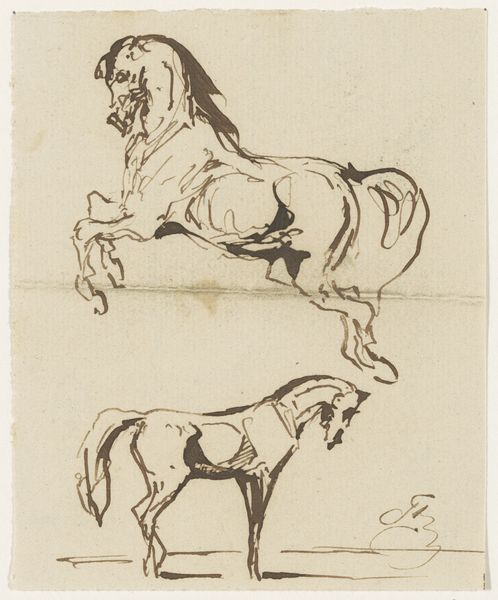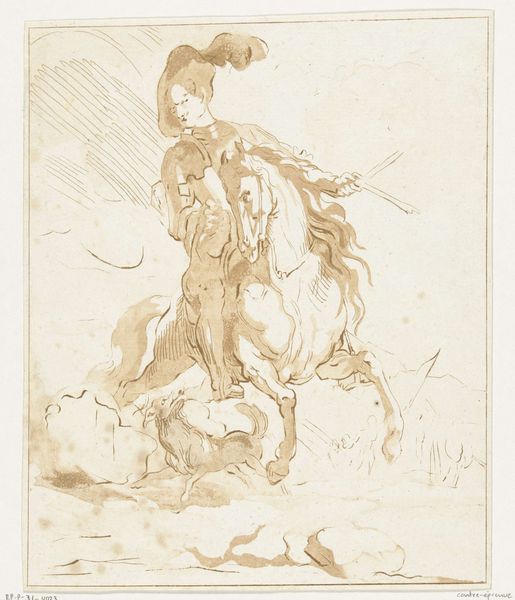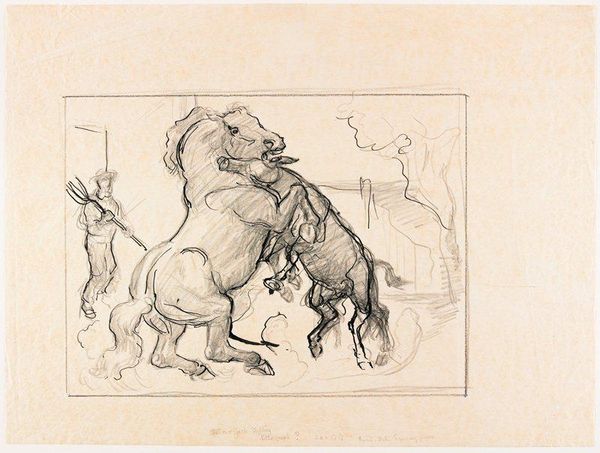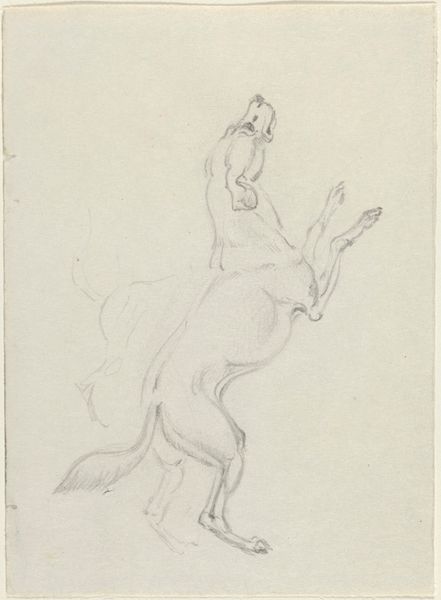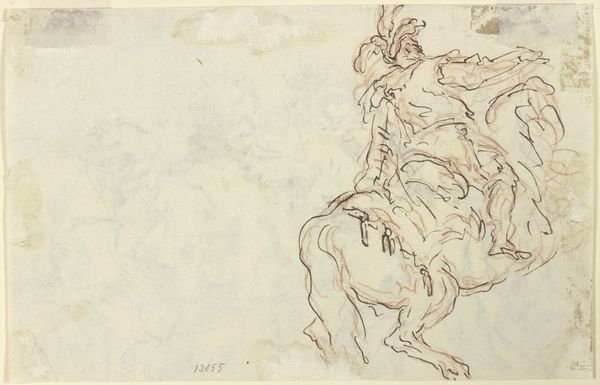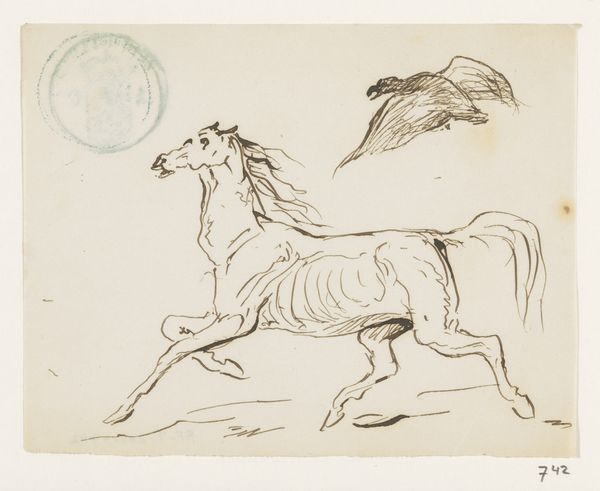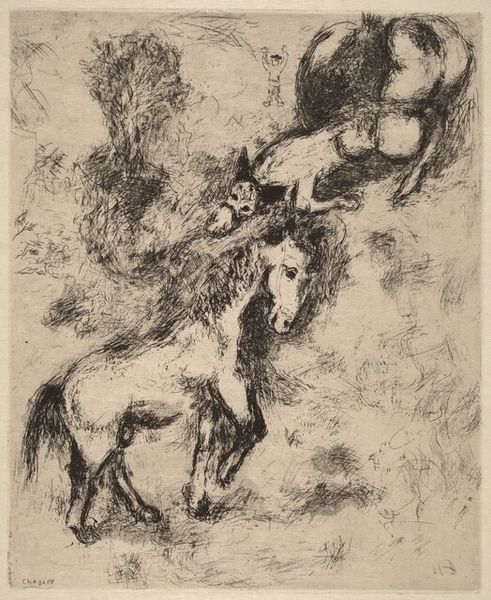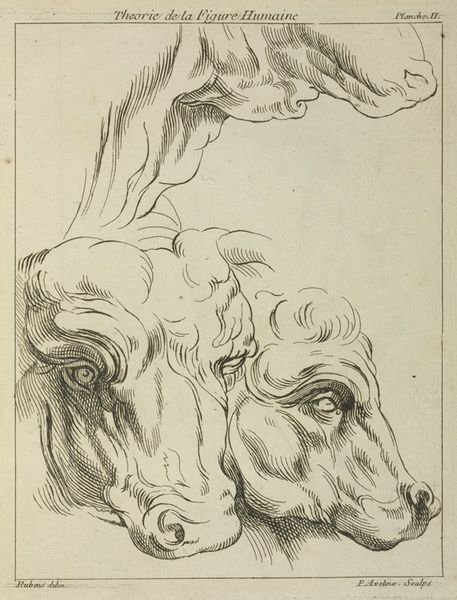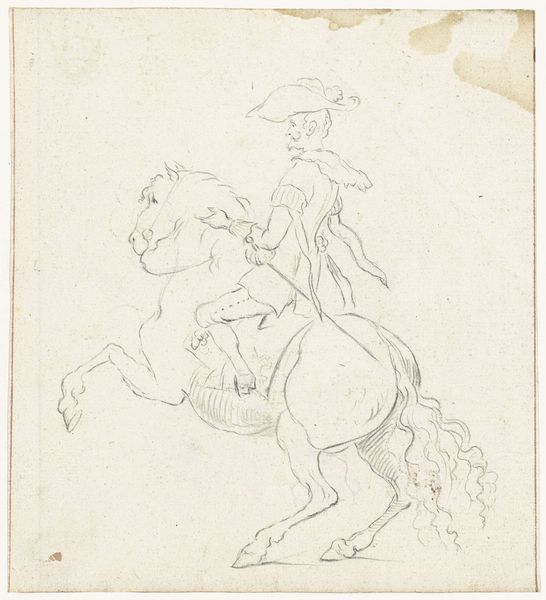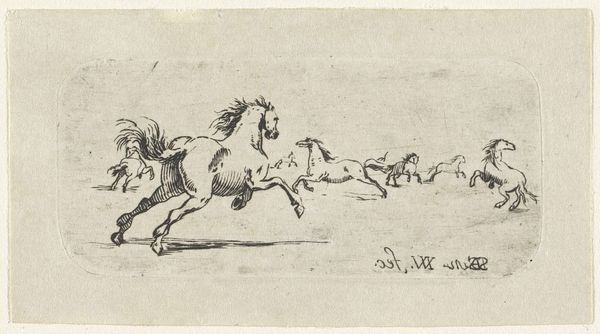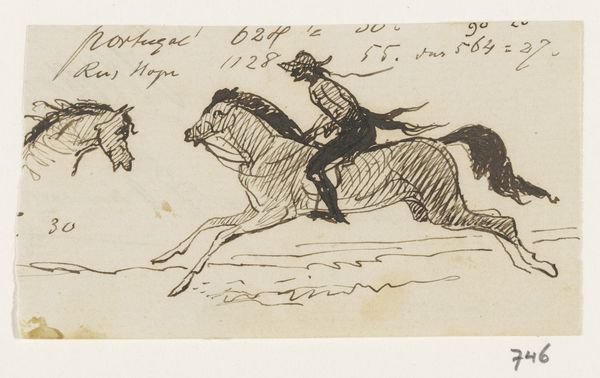
drawing, paper, ink, pen
#
portrait
#
drawing
#
baroque
#
pen sketch
#
figuration
#
paper
#
form
#
ink
#
line
#
pen
Dimensions: height 263 mm, width 164 mm
Copyright: Rijks Museum: Open Domain
Curator: This drawing, attributed to Anthony van Dyck and dating from around 1617 to 1621, is held here at the Rijksmuseum. It's entitled, "Studies of a Horseman and the Head of a Horse". Editor: My immediate reaction is one of kinetic energy. Even in stillness, I feel the tension and the latent power of these animals, captured through energetic lines and dynamic shading. It's raw, not refined. Curator: Van Dyck, a leading light in the Flemish Baroque, clearly demonstrates a fascination with the horse. What do you read into that focus? Editor: The horse, throughout history, has been an incredible symbolic vehicle: of status, of power, of freedom, even of virility. Its persistent presence in art signals a deep relationship between humans and animals, and what we project onto them. Beyond practical use, the horse represents our aspirations. I’m interested to know about the equestrian motif in courtly life during van Dyck’s time. Curator: Certainly. Equine portraiture became linked with aristocratic values and self-image in the early modern period. Think about the psychology of the Baroque ruler: confident, even confrontational, master of the natural world. I suspect van Dyck and his patrons recognized this link and utilized the visual shorthand it provided. Editor: It is almost sculptural, but so free and not highly finished. What is also striking is the repetition. Why several views instead of one masterful rendition? Curator: Well, we must recall the function of drawings in van Dyck's practice. Pen-and-ink studies allowed the artist to experiment with composition and anatomical accuracy, preparing for larger commissions, mostly portraiture. Van Dyck wanted to learn how light defines musculature, capturing subtle details that added realism. The repetitions signal the scientific curiosity and systematic thinking that underpin much of his better-known work. Editor: It serves as an intriguing behind-the-scenes look into Van Dyck’s creative process. And for the viewer today, I think it’s incredibly exciting. To get a window onto the practice behind that output. Curator: I agree; what a privilege to share these energetic visions.
Comments
rijksmuseum about 2 years ago
⋮
Anthony van Dyck dashed off this quick sketch without relying on an underdrawing. Using rapid brushstrokes, he created volume and movement, especially in the horse in the foreground, whose mane seems to flutter in the wind. The drawing was probably intended as a preparatory study for a painting. The artist noted the colours to be used, for instance white for the muzzle.
Join the conversation
Join millions of artists and users on Artera today and experience the ultimate creative platform.
